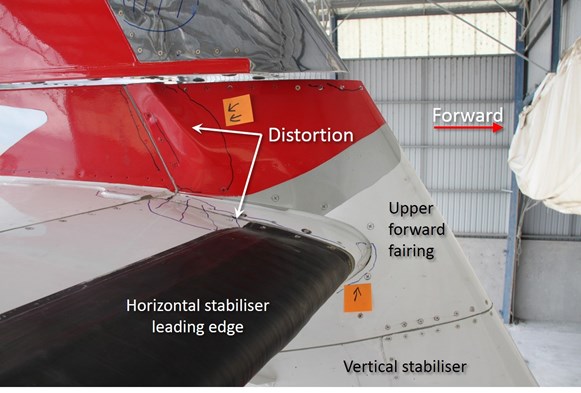The Australian Transport Safety Bureau has issued safety recommendations to the European Aviation Safety Agency (EASA) and aircraft manufacturer ATR seeking improved aircraft system design for inadvertent dual control inputs by pilots after an incident in 2014.
On 20 February, a Virgin Australia ATR 72 aircraft took off from Canberra en route to Sydney. While passing through 8500 feet, the aircraft encountered a sudden decrease in tailwind. This led to a rapid increase in airspeed, with the primary flight display likely indicating well above the maximum operating speed (VMO) of 250 knots. The first officer (pilot flying) reduced engine power and made nose-up control inputs in an attempt to slow the aircraft.
Simultaneously, the captain (pilot not flying) took control of the aircraft and made nose-up pitch control inputs without following the specified take-over procedure and alerting the first officer of his intent. Shortly after the captain initiated the nose-up control inputs, the first officer (unaware that the captain was also making control inputs) reversed his control input. The differential forces in the left (captain) and right (first officer) pitch control systems reached the threshold to activate the pitch uncoupling mechanism, disconnecting the left and right pitch control systems from each other.
The captain completed the take-over by announcing he had control about five to six seconds after taking hold of the controls. However, before the take-over procedure was completed, the addition of the captain’s and first officer’s nose-up control inputs resulted in a pitching manoeuvre that exceeded the limit load factor for the aircraft.
A cabin crew member was unrestrained in the rear of the cabin and when the aircraft pitched back down, she was thrown from her seat and suffered a broken leg.
The flight crew continued the flight using one of the pitch control systems and landed safely in Sydney. It was inspected by maintenance engineers, but no damage was detected. The aircraft returned to service and operated a further 13 flights before a subsequent inspection after a suspected birdstrike found it had sustained serious structural damage to its horizontal stabiliser as a result of the 20 February incident.
Discovery of that damage was the catalyst for one of the ATSB’s most complex, thorough and protracted safety investigations. As a result, the ATSB has issued a safety recommendation to EASA, recommending taking ‘further action to review the current design standard (CS-25) in consideration of effect that dual control inputs may have on control of aircraft.’
In addition, the ATSB has issued two safety recommendations to aircraft manufacturer ATR, recommending that ATR:
- assess the operational risk associated with limited tactile feedback between left and right control columns in the context of no visual or auditory systems to indicate dual control inputs; and
- perform a detailed review of the effects of dual control inputs on the aircraft’s longitudinal handling qualities and control dynamics to determine if there are any detrimental effects that could lead to difficulty in controlling the aircraft throughout the approved flight envelope and operational range.
ATSB Chief Commissioner Greg Hood said, ‘This serious incident demonstrates aircraft and aircraft systems need to be designed in anticipation of and tolerant to foreseeable inadvertent pilot actions. Aviation safety regulators and aircraft manufacturers need to address previously unforeseen aircraft design consequences during the operational life of an aircraft type.’
Hood said the investigation also highlighted the importance of a full and proper inspection to detect aircraft damage and the need for the inspection to be fit for purpose and for inspections to be coordinated and certified to avoid a single point failure.



Comments are closed.